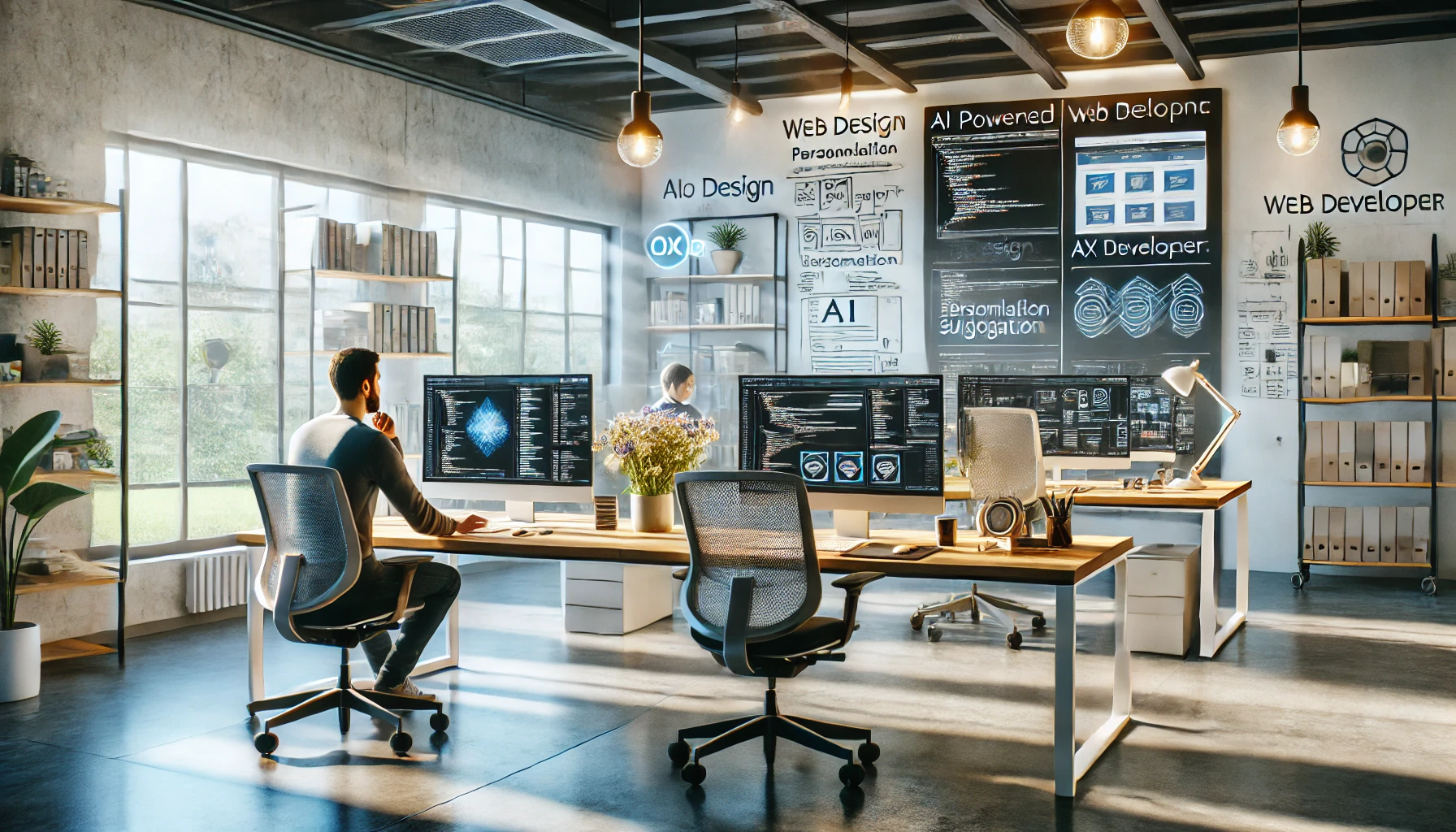FastCreaSite – Artificial Intelligence (AI) is rapidly transforming industries, and web development is no exception. From automating coding processes to creating highly personalized user experiences, AI is revolutionizing how websites are built and interacted with. Developers and designers are now leveraging AI tools to enhance efficiency, boost creativity, and deliver solutions tailored to users’ needs.
This article explores the pivotal role of AI in web development and UX design, shedding light on its capabilities, benefits, and how it’s reshaping the digital landscape.
AI in Web Development: A New Era of Efficiency
The integration of AI in web development has streamlined workflows, enabling developers to focus on creativity and problem-solving. Here’s how AI is making an impact:
Automating Repetitive Tasks
AI-powered tools like GitHub Copilot and TabNine assist developers by generating code snippets, debugging errors, and automating repetitive tasks. These tools reduce development time and allow teams to focus on higher-level tasks, such as architecture design and user engagement strategies.
Intelligent Content Management
AI-driven content management systems (CMS) like WordPress with AI plugins can analyze user behavior and recommend content updates or layouts. This ensures websites remain relevant and engaging, catering to the dynamic preferences of their audience.
Advanced Testing and Debugging
AI tools enhance testing processes by identifying bugs and suggesting fixes faster than manual methods. Automated testing frameworks like Selenium now integrate AI to predict potential vulnerabilities and optimize website performance.
Revolutionizing UX Design with AI
AI is not just changing how websites are built; it’s also redefining how users interact with them. Here are key ways AI is revolutionizing UX design:
Personalized User Experiences
AI algorithms analyze user data to create personalized experiences. By tracking browsing history, preferences, and behavior, AI can dynamically adjust website content, recommend products, or customize interfaces to suit individual users. Platforms like Amazon and Netflix have mastered this approach, setting benchmarks for personalization.
Conversational Interfaces
Chatbots powered by AI, such as those built with GPT models, provide real-time support and improve user satisfaction. These bots handle a wide range of queries, reducing the workload on customer service teams while ensuring users receive accurate and timely responses.
Predictive Analytics
AI tools use predictive analytics to anticipate user needs. For example, e-commerce websites can suggest products based on a user’s purchase history and preferences, while educational platforms can recommend courses tailored to individual learning goals.
AI-Driven Design Tools
AI design tools like Adobe Sensei and Figma AI are enabling designers to prototype, iterate, and optimize interfaces with unprecedented speed and precision. These tools offer features such as automated layout generation, design suggestions, and real-time collaboration.

READ MORE : Strategy 2030: Creating a Prosperous and Sustainable Asia-Pacific
Benefits of Using AI in Web Development and UX Design
Enhanced Efficiency
For example : AI automates routine tasks, allowing developers and designers to focus on creativity and innovation. This leads to faster project completion and higher-quality outputs.
Improved Personalization
AI delivers unique user experiences by analyzing vast amounts of data and tailoring interactions to individual preferences. WhileThis not only boosts user satisfaction but also increases engagement and conversion rates.
Better Decision-Making
AI tools provide data-driven insights that guide developers and designers in making informed decisions. From layout optimization to content recommendations, AI ensures every element is backed by analytics.
Cost-Effectiveness
While By reducing the time and resources required for development and maintenance, AI lowers operational costs, making advanced web solutions more accessible to businesses of all sizes.
Challenges of Integrating AI in Web Development
Complexity and Learning Curve
Adopting AI tools requires a deep understanding of the technology. Developers and designers must invest time in learning how to leverage AI effectively.
Data Privacy Concerns
AI systems rely on user data to deliver personalized experiences. Ensuring data privacy and complying with regulations like GDPR are crucial to maintaining user trust.
Initial Investment
Next Implementing AI technologies can be costly initially. However, the long-term benefits often outweigh the initial expenses, making it a worthwhile investment.
The Future of AI in Web Development and UX Design
The future of AI in web development and UX design is incredibly promising. As AI technologies continue to evolve, we can expect:
- Hyper-Personalization: Websites will deliver experiences that feel almost human, predicting user needs with uncanny accuracy.
- Voice and Gesture Interfaces: AI will enable seamless interactions through voice commands and gestures, enhancing accessibility.
- Smarter Chatbots: AI-powered bots will become indistinguishable from human agents, providing more nuanced and empathetic responses.
AI in web development and UX design is not just a trend it’s a transformative force shaping the digital landscape. By automating processes, enhancing personalization, and enabling data-driven decisions, AI empowers developers and designers to create websites that are more efficient, engaging, and user-friendly.
Meanwhile as the adoption of AI continues to grow, Like businesses and individuals must embrace this technology to stay competitive in an increasingly digital world. With the right tools and strategies, the possibilities for innovation are endless.
